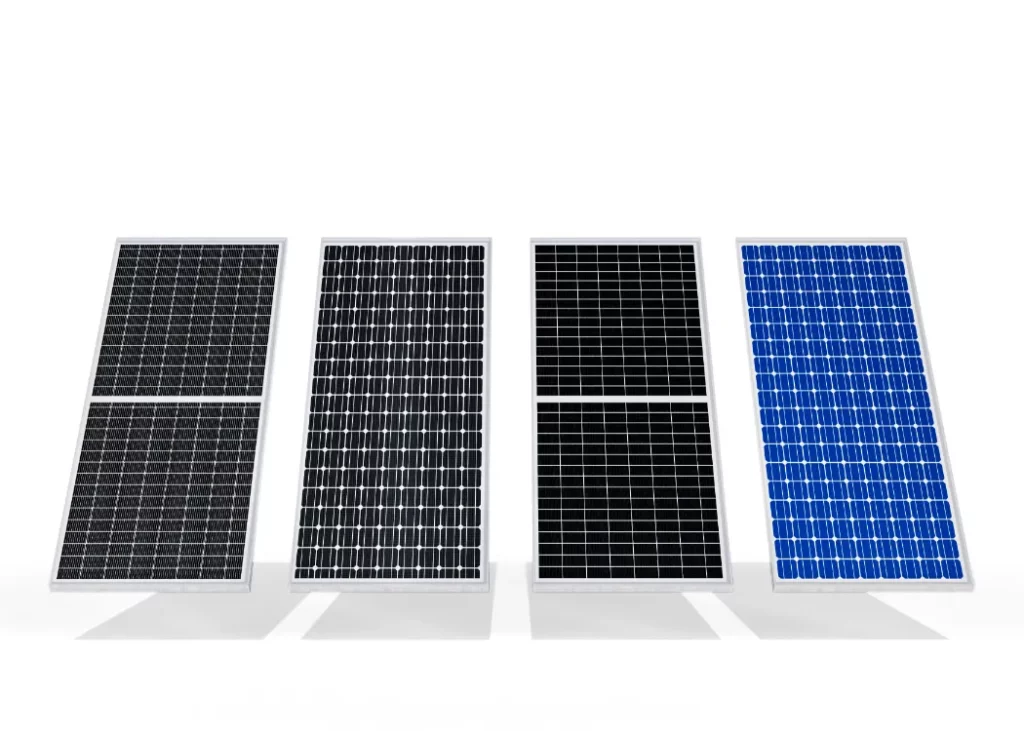Demystifying Solar Panels: A Layperson’s Guide to the Different Types
- By user

In recent years, solar energy has taken centre stage as a clean, sustainable power source, offering a beacon of hope for a greener future. At the heart of this solar revolution are solar panels – those sleek, sun-soaking devices that turn sunlight into electricity. But did you know that not all solar panels are created equal? Let’s embark on a journey through the sunlit world of solar technology, unravelling the mystery behind the different types of solar panels.
1. Monocrystalline Solar Panels: The Efficiency Masters
These high-efficiency panels are made from a single crystal structure, usually silicon, providing a uniform and organized arrangement of atoms. This characteristic allows monocrystalline panels to convert sunlight into electricity with exceptional efficiency. Their sleek black appearance is not just for show – it signifies the superior aesthetics that come with top-notch performance. If you have limited rooftop space but crave maximum power output, monocrystalline solar panels might be your go-to choice.
2. Polycrystalline Solar Panels: Balancing Efficiency and Affordability
These panels boast a manufacturing process that utilizes multiple crystal structures, providing a cost-effective alternative to their monocrystalline counterparts. While they may not match the efficiency levels of monocrystalline panels, polycrystalline solar panels still pack a punch in terms of power generation. With their blue speckled appearance, they might not be as sleek as monocrystalline panels, but they strike a balance between efficiency and affordability that appeals to many solar enthusiasts.
3. Thin-Film Solar Panels: Flexible and Unconventional
If traditional solar panels were books, thin-film solar panels would be the e-books of the solar world – flexible, lightweight, and open to interpretation. Unlike their rigid crystalline cousins, thin-film solar panels are made by depositing thin layers of photovoltaic material onto a substrate, such as glass or plastic. This flexibility makes them suitable for unconventional applications, like solar shingles, solar backpacks, or even solar-powered clothing. While thin-film panels may not be as efficient as crystalline ones, their adaptability to various surfaces and environments adds a touch of versatility to the solar energy landscape.
4. Bifacial Solar Panels: Harvesting Sunlight from Both Sides
Bifacial solar panels are the multitaskers of the solar world. Instead of absorbing sunlight only from the front side, like traditional panels, bifacial panels capture sunlight from both the front and rear sides. This unique feature allows them to harvest reflected sunlight from surrounding surfaces, such as the roof floor or nearby structures. Bifacial panels are typically mounted on elevated structures to maximize their exposure to reflected sunlight. While their efficiency gains depend on factors like albedo (reflectivity of surfaces), bifacial solar panels have the potential to boost overall energy production, making them an intriguing option for those seeking to squeeze every drop of sunlight for power.

5. Heterojunction Solar Panels: Pushing the Efficiency Envelope
For those who crave the cutting-edge, heterojunction solar panels might be the answer. This technology combines amorphous silicon layers with crystalline silicon, resulting in enhanced efficiency and performance. With their sophisticated design, heterojunction solar panels minimize energy losses, making them more efficient in converting sunlight into electricity. While these panels currently come with a higher price tag, the potential for increased energy yield over their lifetime may justify the initial investment for those looking to harness the utmost efficiency from their solar installation.
In conclusion, the world of solar panels is a diverse landscape where different technologies cater to various needs and preferences. Whether you prioritize efficiency, affordability, flexibility, or innovation, there’s a solar panel type tailored just for you. As solar technology continues to evolve, we can anticipate even more breakthroughs that will redefine how we capture and utilize the sun’s abundant energy. So, whether you’re considering going for rooftop solar for your home or simply curious about the future of renewable energy, remember that the key to a brighter, cleaner future lies in understanding the diverse options available in the world of solar panels.
